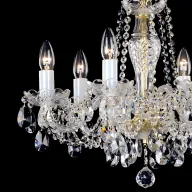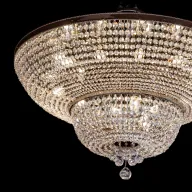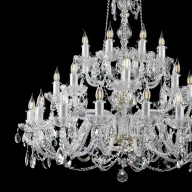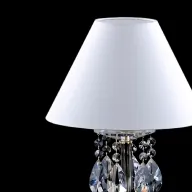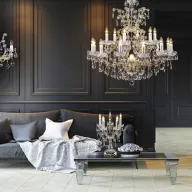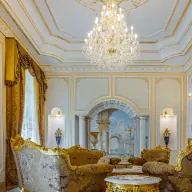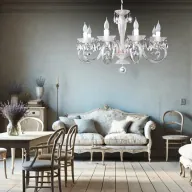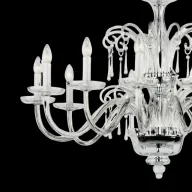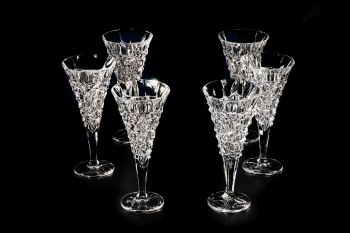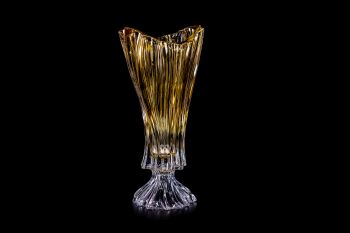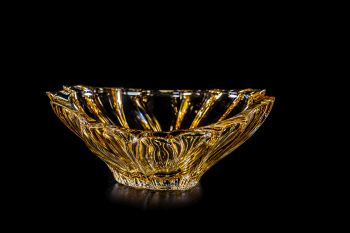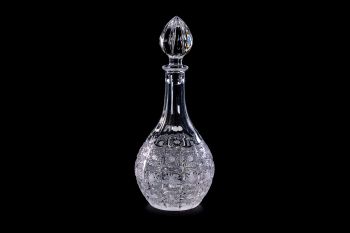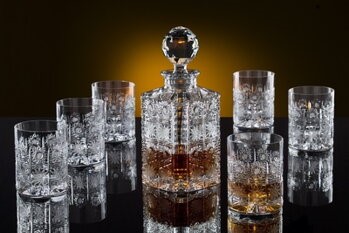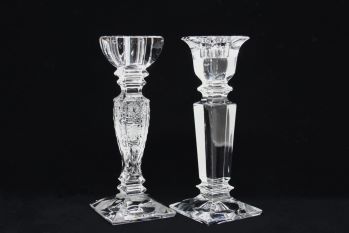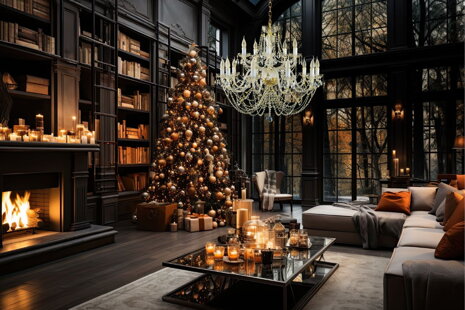Honoring Crystal Tradition: 300 Years of Chandeliers
Added 29.1.2024 14:09.49
Our country has a significant role in the history of glassmaking, and in December 2023, it earned recognition on the UNESCO Representative List of Intangible Cultural Heritage. One of the most important elements of this tradition is the production of crystal chandeliers, which this year celebrates an impressive 300 years of existence.
We have prepared a series of thematic articles about crystal chandeliers, which we will present to you gradually throughout the year. Join us on a journey into the fascinating world of crystal lighting.

A replica of the historic Maria Theresa chandelier made and installed by ArtCrystal Tomeš for the Council Hall in Brno.
From Torches to the Art of Illumination
Let's take a journey back in time when torches and candles were the primary sources of light. Torches were typically crafted from pine wood, their tips coated in pitch or wrapped in various materials soaked in oil or fat, which ensured a longer burning time.
Over time, safety and control over the lighting process became paramount, leading to the development of tallow bowls and later oil lamps. As the Middle Ages arrived, along with the Christian symbolism of the Bethlehem Light, the need for suspended illumination became apparent. This led to the creation of the first hanging lamps resembling wheels with architectural elements, commonly found in religious edifices.
Illumination Revolution: From Wax and Oil to Electricity
Throughout history, the evolution of lighting has marked significant milestones. Initially, candles, crafted from wax or oil, were the primary luminaries, casting a gentle, yet unsteady glow. The 19th century heralded a pivotal shift with the advent of oil lamps, utilizing kerosene or whale oil, surpassing candles in both efficiency and stability.
Yet, the landmark breakthrough emerged with the late 19th century's unveiling of electric lighting. Pioneers like Thomas Edison introduced the electric bulb, a beacon of innovation in illumination. This electrified light transcended mere efficiency and safety; it illuminated public and private realms alike, catalyzing transformative impacts on industries, homes, and the fabric of daily life.
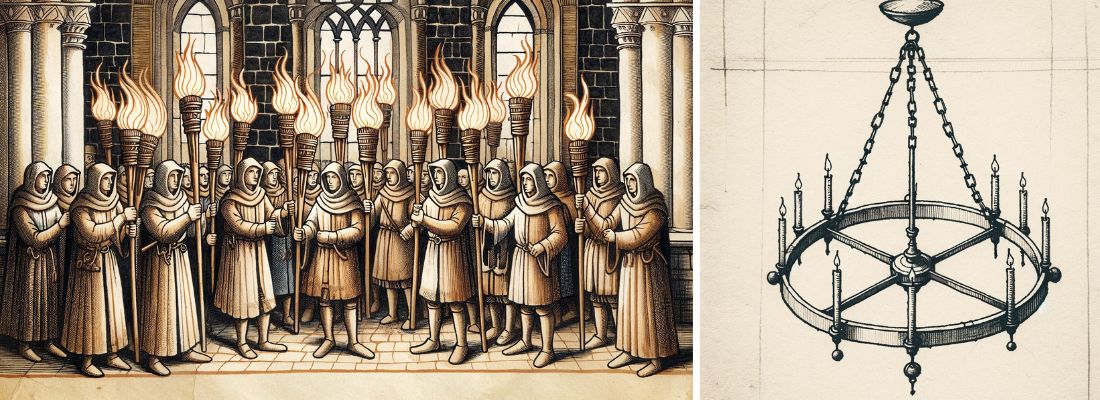
These are some examples of the early forms of lighting sources.
However, as time went on, the emphasis on safety and controlling the burn grew, so the light began to be enclosed in tallow bowls and later oil lamps. With the advent of the Middle Ages and the Christian symbolism of the Bethlehem Light, the need for illumination from above arose. Thus the first hanging lamps in the form of wheels with architectural elements were created. These chandeliers are known from religious buildings.
Revolution in Lighting
The first mention of a chandelier decorated with crystal comes from Venice around the middle of the 16th century. During this period, people started recognizing that the modest illumination provided by candles and oil lamps acquired a superior quality when surrounded by polished natural stones like rock crystal or glass. For a more in-depth exploration of the history of Bohemian crystal, please refer to the accompanying article.
The skill of processing Czech crystal gradually became popular in Europe and eventually reached Bohemia, thanks to the French. In the early 17th century, Bohemia saw the creation of its first crystal chandelier, influenced by Italian designs, with many experts crediting Reinhold Palme for its inception. During this period, chandeliers were typically constructed with metal frames, featuring either unpolished glass components or adorned with decorative drops and spheres.

Sketches of the first lighting fixtures from the early 18th century. Source: Palme, Kristallkronleuchter Seit 1724
The beginning of the 18th century brought a revolution: it was discovered that precisely cut glass surfaces increased the light dispersion much more than natural ones and, moreover, created a charming spectacle. They were able to split light rays into all the colours of the spectrum. This led to the development of the technology of cutting trimmings and glass components.

The difference between the optical properties of uncut and cut crystal
The Beginning of the Era of Czech Chandeliers: 1724
The turning point in the history of chandelier production in Bohemia was the year 1724, when glass cutter Josef Palme of Práchně obtained a royal permit for the production of chandeliers.
These chandeliers quickly became synonymous with luxury and quality. They gained recognition in Bohemia, but also abroad, where they surpassed all competitors.
And what's on the horizon?
If you're curious about how the art of crafting chandeliers evolved during its golden era after 1724 and which Czech companies played a pivotal role in globalizing Czech crystal, stay tuned for the February article.
Did you know that...
- In the 18th century, chandeliers with movable arms that allowed the direction of light to be changed appeared in England.
- Dripping wax from candles in chandeliers was so common in the past that special solutions such as wax holders and low melting point candles were developed.
- Czech chandeliers gained such fame that even Emperor Napoleon Bonaparte ordered them for his palace in Elba.







